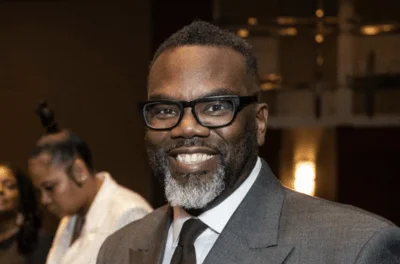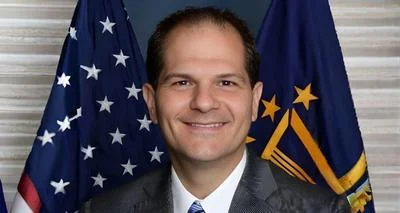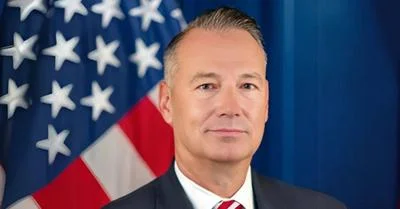Thomas O’Rourke, a professor emeritus of kinesiology and community health at the University of Illinois Urbana-Champaign | https://news.illinois.edu/files/6367/9102533/209904.jpg
Thomas O’Rourke, a professor emeritus of kinesiology and community health at the University of Illinois Urbana-Champaign | https://news.illinois.edu/files/6367/9102533/209904.jpg
Thomas O’Rourke, a professor emeritus of kinesiology and community health at the University of Illinois Urbana-Champaign, spoke with News Bureau life sciences editor Diana Yates about how previous efforts to institute public health measures succeeded and how the same approaches can be employed to reduce the scourge of gun violence in the U.S.
Briefly, what is the scope of the problem of gun violence in the U.S.?
Gun violence is a significant public health problem. To date in 2022 there have been more than 630 mass shootings, an average of more than one a day in which four or more people were injured or killed in a single event, not including the shooter. Mortality data from the Centers for Disease Control and Prevention shows that firearm-related deaths increased by 15% from 2020 to a record 45,222 in 2021, the highest number ever recorded by the CDC since it began tracking firearm deaths in 1968. In 2020, 79% of all homicides in the U.S. involved firearms, whereas in Canada it was 37%, in Australia 13% and in the U.K. 4%.
Among developed nations, the U.S. is an outlier in both gun possession and gun deaths. Compared with 22 other high-income nations, the U.S. gun-related murder rate is 25 times higher. Since 1975, gun deaths from homicides, suicides and accidental shootings have claimed more American lives than all wars since the American Revolution, combined. Gun deaths also have significant emotional and economic consequences for survivors, communities and the psyche of the nation.
In a new paper published in the American Journal of Health Education, you say that once-controversial proposals for addressing obvious dangers to public health eventually led to large-scale societal changes that protect people from harm and save lives. What are you talking about?
The history of contentious issues, including smoking and automobile safety, suggest meaningful change can occur over time. Smoking is the leading cause of preventable deaths. In 1964, the first U.S. Surgeon General’s report warned of the health consequences of smoking. At that time, 42% of U.S. adults smoked and smoking was ingrained in the culture. Cigarettes were relatively inexpensive, readily available to youth and adults, highly advertised in print and mass media sometimes using doctors to promote the product. Smoking was allowed in public places and workplaces. Airline flight attendants routinely distributed cigarettes to passengers on flights and smoking was allowed throughout the plane. Efforts to discourage smoking were minimal and laws aimed at tobacco control absent. However, because of education, legislation and taxation, by 2020 adult cigarette smoking declined by more than two-thirds to an all-time low of 12.5%.
Automobile safety also is illustrative. Until the 1950s, little attention was directed to auto safety. There was no public outcry for enhanced automobile safety. In 1903, Massachusetts was the first state to require a driver's license, but it was not until 1954 that South Dakota became the last state to require drivers’ licenses. Seat belts were introduced in 1950. Forty-nine year later, seat belts became mandatory. The first federal safety standards for cars were in 1968. Today, a car must meet about 600 safety standards.
In 1978, Tennessee was the first state to require child safety seats. By 1986, all states required their use. The 1973 Oldsmobile Toronado was the first car with a passenger airbag. By 1998, all cars and light trucks sold in the United States were required have air bags on both sides of the front seat. 2000 saw mandatory reporting of defects by carmakers. Initially, some of these advances were opposed by the auto industry and met with a mixed response from the public. Today, safety is an important selling point by auto manufacturers. The effect has been dramatic. In 1913, 33 people died for every 10,000 vehicles on the road. In 2020, the death rate was 1.5 per 10,000 vehicles, a 95% decline.
In your paper, you describe upstream and downstream approaches to reducing gun violence, and you suggest a focus on upstream efforts aimed at prevention. What are potential upstream efforts in the context of gun violence?
If someone is pushing people into a river, I can wait downstream and try to pull them out one-by-one to stop them from drowning, or I can go upstream and try to stop the person from harming them. The same is true for gun violence approaches. While both are important, upstream efforts focusing on prevention offer the greatest potential to save lives and reduce trauma. Examples of upstream approaches include enacting a universal background check and increasing waiting periods to purchase a gun, raising the minimum gun-buying age, mandating training and licensing, requiring secure gun storage including trigger locks, and requiring that guns and ammunition be stored separately.
Bans on certain weapons and ammunition also can make a difference. More states could enact “red flag” laws that permit police (and in some states, family members, co-workers and others) to petition a state court to order the temporary removal of firearms from a person they believe presents a danger to others or themselves. Another measure would be to repeal gun industry immunity laws in states that have them. Congress could remove a 1996 restriction preventing the CDC from conducting gun violence prevention research.
How can those working to reduce gun violence adopt strategies to tame the epidemic of gun violence?
Far better than advocating for “gun control” would be to frame the issue as one that promotes “gun safety,” “reducing gun violence” and “responsible gun ownership.” A focus on the many areas of gun reform already supported by public opinion would be more successful.
Positive changes often are associated with sustained advocacy and education efforts – usually occurring incrementally over many years. Over time, public opinion can be a powerful influence in a democratic society, as evidenced by the recent passage of bipartisan congressional gun legislation, the first in nearly three decades. Abraham Lincoln summed it up well: “Public sentiment is everything. With public sentiment, nothing can fail. Without it, nothing can succeed.”
Original source can be found here






 Alerts Sign-up
Alerts Sign-up